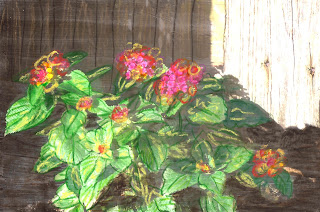Anyway, while I was vacationing in South Florida, one of my favorite places on the planet, I visited the exquisite Morikami Japanese Gardens in Delray Beach. Here's the famous Red Bridge:
 |
| Morikami Japanese Gardens, Delray Beach, MR 2013 |
And now the gardens have an extra delight. Tillies! They have added dozens of Tillandsias to the gardens, and it really enhances the experience. After all, these are New World plants that deserve to be showcased.
But in every story, there is a villain. And in South Florida, that villain is the Evil Weevil. You can read the details from the University of Florida here:
http://entnemdept.ufl.edu/creatures/orn/m_callizona.htm
Metamasius callizona first showed up in South Florida in 1989, and hailed from Mexico. It loves to eat Tillies the way people love to eat Krispy Kremes. In fact, it attacks all sorts of bromeliads, and is now in the Everglades. Some Tillandsias are more resistant than others, but none seem to be completely immune. The weevil is spreading through Florida and is becoming a huge problem for Tillies and their gardeners.... Here's the distribution map from UF:

If you click on the UF link above, you can see what the critters look like, what their egg cases look like, and what they do to the poor Tillies. The photos are too gruesome for this blog.
So it's another case of be very careful what we bring into our gardens. Some species really need to stay home. Especially weevils. As of now, the Tillandsias of the Morikami, and my garden, are fine. But I'm certainly on the lookout for Evil Weevils.



































